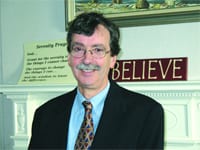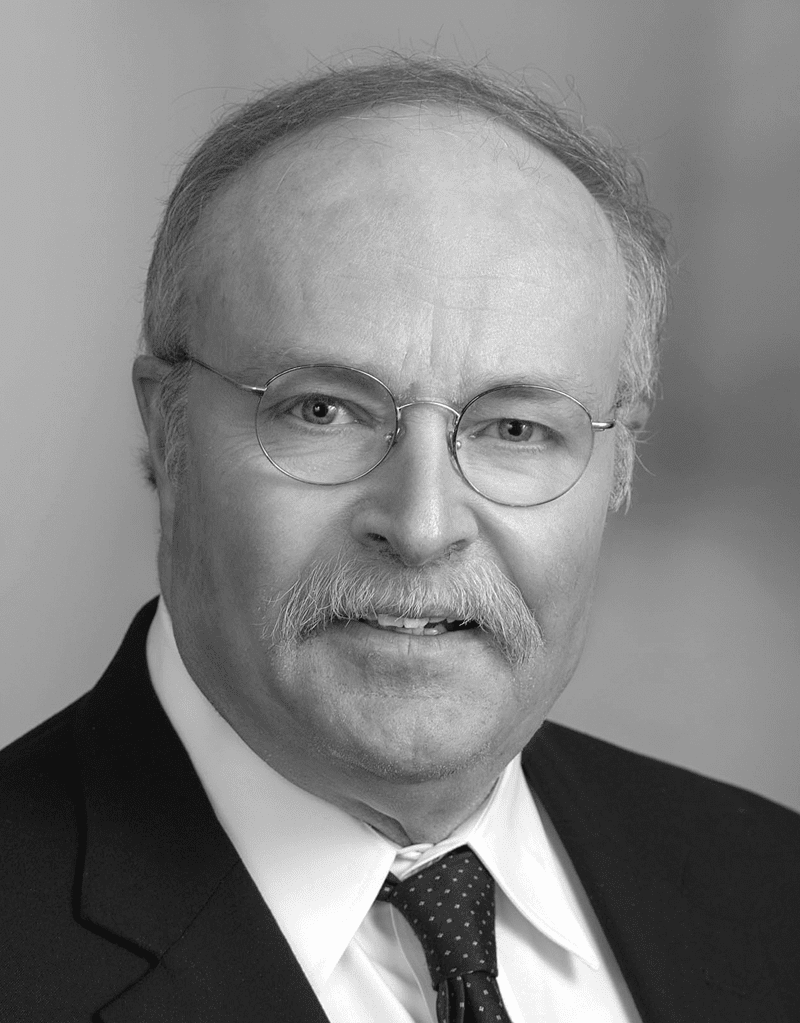On with the Fight Alcoholism & Drug Services Gains New Weapons against Addiction
Phil Day sees them come through the door daily at Carlson Recovery Center — more than 20,000 visits annually from people who want to kick their addiction to alcohol or drugs.
The problem is only getting worse.
“The number of opiate addicts has clearly crept up, and it really is an epidemic,” said Day, program manager of Alcoholism & Drug Services (ADS), a Baystate Health-affiliated family of addiction-treatment agencies including the Carlson Recovery Center for detoxification and intensive outpatient care, the Sloan Clinic for outpatient counseling, and My Sister’s House and Opportunity House for residential treatment.
“There’s also still plenty of alcoholism, crack cocaine is still a significant problem, and there are plenty of people on painkillers like Oxycontin — especially younger folks.” It’s a sobering litany of issues, but one that has, far from discouraging Day and his team of doctors, nurses, and counselors, actually led ADS to seek new, more effective treatment options.
For example, “after a long process, we’ve become licensed and accredited to provide methadone as a detoxification medication,” Day said, noting that the program began in April. “That has been the biggest change for us.”
With addiction to opiates such as heroin on the rise in Greater Springfield, he said, methadone has emerged as a particularly effective replacement therapy, particularly for those who have been abusing for a long time. “It involves a longer length of stay — six days, perhaps a little longer — but it has helped people successfully get off heroin.
“We’ve always had a protocol of non-opiate medications for withdrawal, which have been successful for a number of folks,” he continued, “but for many addicts, withdrawal has been very uncomfortable and difficult, and methadone is very effective for them. Now, more people can come here and be treated successfully.”
Of course, being the only methadone clinic in Springfield — Providence Behavioral Health Hospital operates one in Holyoke — has created a supply-and-demand issue for ADS services, said Robert Azeez, clinical supervisor at Carlson. That demand, in turn, highlights the need for even more such programs in Western Mass. “If we’re full, people can go to Holyoke, and if they’re full, people can go to Worcester or the Eastern part of the state,” he said, “which means we need more services, more programs, and more funding from the state.”
State dollars have been a tricky subject in the past. ADS — and many other agencies statewide — are still dealing with the loss of 447 beds in Level B step-down programs, which are short-term rehabilitation services bridging the gap between acute detox and long-term recovery. None of those beds — ADS lost 34 of them — have been reactivated, although lawmakers have budgeted dollars that would allow them to reopen at some point.
Until then, said Azeez, many people who would be in such programs wind up in hospital emergency rooms, medical floors, or psychiatric units, which costs the entire health system more money than a rehab bed would.
However, said Day, for key programs like acute detox, “the state has upgraded our contracts so that in the past few years, that’s not a barrier to getting people in. Most insurance pays for detoxification, and if not we have Department of Public Health contracts, so there’s a good foundation for treating people.”
Under One Umbrella
Alcoholism and Drug Services began in the early 1970s as a loose coalition of programs launched by recovering addicts. “Alcoholism had just been decriminalized,” Day said, “and the state set up health programs to deal with this public health problem — not criminal problem.”
What is now the family of ADS programs remained a group of freestanding community services from the early 1970s to the mid-1990s, when the state DPH encouraged public health programs to merge with hospitals.
“We decided Baystate was the best home for these programs, and it has been a good fit,” Day said. “Being part of the hospital lent some quality and resources to our programs, and we’ve helped to fill a void in the range of services the hospital has.”
That ability has become more focused in the past several years with a focus on what is known in the behavioral health world as dual diagnosis, or the simultaneous treatment of both substance addiction and other, co-occurring mental health disorders, instead of focusing on one and hoping the other will improve on its own.
“We’ve become more professional and more skilled in dealing with people with major mental illness and co-occurring medical issues,” Azeez said, noting that the acuity of today’s patients — and the number presenting with more than one condition — has been on the rise for some time. “A lot of that has to do with the lack of resources available to them in the community, so emergency rooms and detox programs have become a place where primary care is given.”
That, he said, is an inefficient, ineffective model of care that leads to far too many relapses.
“Our program is actually a template that’s being used for other programs in the state,” Day said. “This way, addicted folks don’t necessarily have to go to a locked psychiatric unit; they can be treated in an addiction-oriented environment and receive their medications here. That has been a huge asset, and Medicaid and private insurance are recognizing the value of that model.”
The dual-diagnosis concept, Day explained, means that not every addict who needs detox while being treated for a separate psychiatric diagnosis needs the security of a locked unit when they would respond just as well outside of one. Currently, about 15{06cf2b9696b159f874511d23dbc893eb1ac83014175ed30550cfff22781411e5} of the detox patients at Carlson have a dual diagnosis. He stressed, however, that the center carefully screens all patients to make sure they are safe in such a minimum-security environment.
“A lot of these folks have been here before and understand the limits of our service,” he said. “We don’t have a locked unit. So we don’t want to take people who aren’t safe or who don’t have some degree of self-managing. We don’t have the staffing to handle those folks. So if there’s even a slight risk that someone is not safe here, they can go to a locked unit to begin their treatment, and when they’re safe, they can be transferred to us.
“This allows us to take down as many barriers as we can for patients,” Day continued, and give people what they need in one place – while also maintaining good linkage to other places we can refer people for other programs.”
The need is certainly as acute as the addictions themselves; Carlson takes patients 24/7 if they meet certain criteria, but overall, ADS services have waiting lists. But the agency’s mission, Day said, remains the same as it was 10 or 20 years ago.
“People aren’t getting what they need elsewhere, which is treatment for addictions,” he said. “That’s why we specialize in what we do. With this network of services, we want to try as best we can to meet these needs in the community.”
There’s still a long way to go, but for now, successes are recorded one patient at a time.


